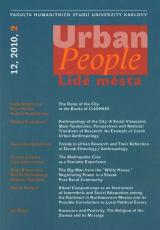The Makropulos Case as a Semiotic Experience
DOI:
https://doi.org/10.14712/12128112.3609Klíčová slova:
semiotics, Peirce, The Makropulos CaseAbstrakt
In recent decades ethnomusicology has focused on, among other things, the role of the listener and on comprehension of the function and/or the importance that music has for him/her. For this it uses linguistic and, especially, semiotic methods. Turino (1999, 2008) returns to the Peirce concepts of the icon, the index, the symbol, the rheme and the dicent, snowballing and chaining in order to explain the effects of music. This article arises from two contrasting perceptions of the same musical event: Janáček’s opera The Makropulos Case. It analyzes both listeners’ experience on three levels in accordance with Peirce’s three types of signs: as opera in the National Theater, Janáček’s music and the concrete 2008 production of The Makropulos Case. A semiotic analysis of the inner reaction to the concrete musical rendition enables us to reconstruct the ontogenetic musical development and explains a certain universality of the effect of the opera despite different musical histories.
Stahování
Publikováno
Jak citovat
Číslo
Sekce
Licence

Tato práce je licencována pod Mezinárodní licencí Creative Commons Attribution-NonCommercial-NoDerivatives 4.0.


